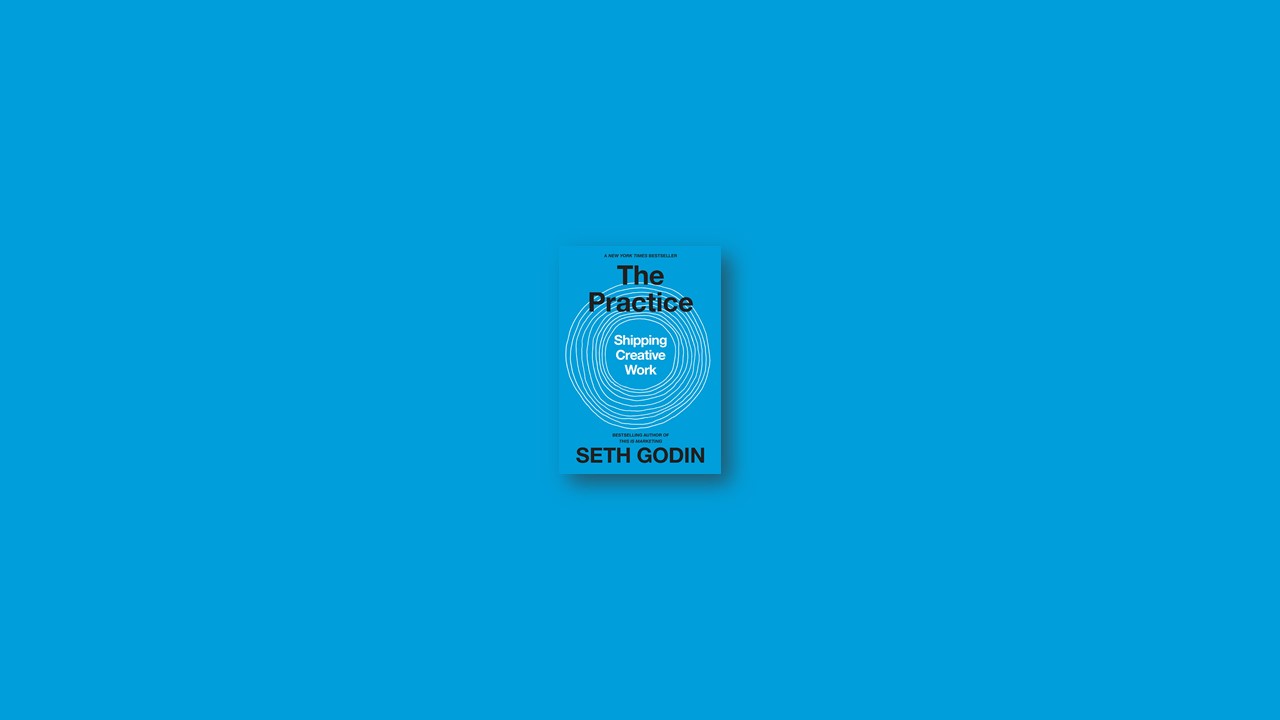It’s Possible
For people who seek to teach, to innovate, and to solve interesting problems.
For people who want to go on the journey to become a therapist, a painter, or a leader.
For people like us.
It’s possible. The people who came before us have managed to speak up, stand up, and make a difference. While each journey is unique, each follows a pattern—and once you see it, it’s yours.
We simply need to find the courage to be more creative. The forces that are holding us back have long been unseen, but we can see and understand them and begin to do our work.
The practice is there if we’re willing to sign up for it. And the practice will open the door to the change you seek to make.
The Pattern and the Practice
The recipe for recipes is straightforward: good ingredients, mise en place, attention to detail, heat, finish. You do them in order. But when we create something for the first time, it’s not as linear, not easily written down.
This new practice takes leadership, a creative contribution—something that not just anyone can produce, something that might not work but that might be worth pursuing. It’s often called “art.”
Creativity doesn’t repeat itself; it can’t. But the creative journey still follows a pattern. It’s a practice of growth and connection, of service and daring. It’s also a practice of selflessness and ego in an endless dance. The practice exists for writers and leaders, for teachers and painters. It’s grounded in the real world, a process that takes us where we hope to go.
This practice is a journey without an external boss. Because there’s no one in charge, this path requires us to trust ourselves—and more importantly, our selves—instead.
Finding a Practice
We can adopt a practice. Here are the surprising truths that have been hidden by our desire for those perfect outcomes, the ones industrial recipes promise but never quite deliver:
Skill is not the same as talent.
A good process can lead to good outcomes, but it doesn’t guarantee them.
Perfectionism has nothing to do with being perfect.
Reassurance is futile.
Hubris is the opposite of trust.
Attitudes are skills.
There’s no such thing as writer’s block.
Professionals produce with intent.
Creativity is an act of leadership.
Leaders are imposters.
All criticism is not the same.
We become creative when we ship the work.
Good taste is a skill.
Passion is a choice.
This Is Art
Painting is something you do to a house. Art is the work we do where there is no right answer—and yet the journey is worth the effort. We might make art with a keyboard, with a paintbrush, or with our actions. Mostly, we do it because we lean into a practice, trusting we have a shot at making a difference.
Artists make change happen. Artists are humans who do generous work that might not work. Artists aren’t limited to paint or museums.
You’re an artist as soon as you announce you are. As a leader, a coach, a contributor, a designer, a musician, an impresario . . . it’s art if you let it be. If you care enough.
Legendary designer and illustrator Milton Glaser said, “One of the problems with art is that it is self-anointing: Anyone can be an artist by simply pointing to themselves and saying so. The truth is that there are very few artists.
Perhaps You Can Make Some Art
Art is what we call it when we’re able to create something new that changes someone.
No change, no art.
You were born ready to make art. But you’ve been brainwashed into believing that you can’t trust yourself enough to do so.
You’ve been told you don’t have enough talent (but that’s okay, because you can learn the skill instead).
You’ve been told you’re not entitled to speak up (but now you can see how many others have taken their turns).
And you’ve been told that if you can’t win, you shouldn’t even try (but now you see that the journey is the entire point).
Art is the generous act of making things better by doing something that might not work.
It’s Time to Find Your Voice
The practice that is open to us always works better than anything else we could try.
Take the time to see what’s worked before. Watch the creative heroes around us who have raised their hands, taken the lead, and created something that matters. Again and again, the work falls into a pattern, often containing counterintuitive twists and turns.
You can start where you are.
You can see and you can be seen.
You can listen and you can be heard.
And you can do the work that you were born to do.
Sometimes, we opt for more instead of better.
But better is better than more.
Start Where You Are
Identity fuels action, and action creates habits, and habits are part of a practice, and a practice is the single best way to get to where you seek to go.
Before you are a “bestselling author,” you’re an author, and authors write. Before you are an “acclaimed entrepreneur,” you’re simply someone who is building something.
“I am _______ but they just don’t realize it yet” is totally different from “I’m not _______ because they didn’t tell me I was.”
The only choice we have is to begin. And the only place to begin is where we are.
“So Far” and “Not Yet”
You haven’t reached your goals (so far).
You’re not as good at your skill as you want to be (not yet).
You are struggling to find the courage to create (so far).
This is fabulous news. It’s been going on since you were a kid. Something isn’t there when you want it (or need it) but then it is. Persistent and consistent effort over time can yield results.
“So far” and “not yet” are the foundation of every successful journey.
Attachment to the Outcome
What’s the weather like in Vancouver today? You probably don’t know or care. How deep is the powder in Telluride? Same thing.
Then, something comes along that you do care about. How will the weather be for the picnic you’re planning on Saturday? If it rains, will your day be ruined?
We can spend a lot of psychic energy willing the weather to be perfect. We can spend just as much time living out the bad weather in advance, suffering ahead of time, knowing that the outcome we seek isn’t going to happen the way we want it to. We want it to work out so badly, we now need it to.
It’s easy to see the absurdity of attachment when we’re talking about the weather. The thoughtful alternative is resilience. To be okay no matter how the weather turns out, because the weather happens without regard for what we need.
If You Knew You Were Sure to Fail, Then What Would You Do?
The more important the project we take on, the more difficult it is to find certainty that our work will succeed before we begin.
We can begin with this: If we failed, would it be worth the journey? Do you trust yourself enough to commit to engaging with a project regardless of the chances of success?
The first step is to separate the process from the outcome.
Not because we don’t care about the outcome. But because we do.
The Truth about Getting Better
The word “mundane” actually refers to the real world: the practical, skills-based, reality-focused truth of the world around us.
In his breakthrough paper, “The Mundanity of Excellence,” researcher Daniel Chambliss found the perfect laboratory to test for what it means to level up.
He reviewed the habits, backgrounds, and performances of competitive swimmers. It’s an ideal population to examine because:
There are clear levels. From country-club league swimmers all the way up to the Olympics, participants are clearly in only one group in the hierarchy at a time.
Performance is easily measured. It’s not like figure skating where the judges matter.
There are almost no external factors. The pool is the pool. Luck is easy to rule out, and performance can be measured over time.
There’s a large and fairly varied population of competitors.
Here are the facts that he discovered:
There is no quantitative difference in training. People at higher levels of performance don’t spend more hours training.
There is no requirement for social deviance. The athletes at the highest level had just as many friends and just as normal a life as dedicated swimmers at lower levels.
There is no talent differentiation. The ability to swim fast is not something you’re born with.
In fact, there were two key differences between great competitors and good ones:
- The best swimmers swim differently than the ones who don’t perform as well. They do their strokes differently; they do their turns differently. These are learned and practiced skills.
- The best swimmers bring a different attitude to their training. They choose to find delight in the parts that other swimmers avoid.
This is their practice.
There isn’t just one swimming culture, there are several. The swimmers who hang out at the country-club pool are very different in skill, approach, and affect than those who compete on the varsity team, and the culture of the varsity team isn’t like the one among swimmers who compete at the Nationals.
It turns out that it’s not training hours or DNA that changes outcomes. It’s our belief in possibility and the support of the culture around us.
Creators have a better attitude, because they’ve figured out how to trust the process and trust themselves to work with it.
Attitudes, of course, are skills, which is good news for all of us, because it means that if we care enough, we can learn.


